March 11, 2012
Ten Low-Cost Ways to Treat Water
contributor: Rob Goodier
Having money helps, but clean water solutions for low- and middle-income countries don’t have to be expensive. Celebrities like Bill Gates, Matt Damon and, a celebrity to us, Susan Davis, to name a few, have helped clean rivers, dig wells and install pumps, pipes and other hardware to deliver clean water. Their time and money are well spent because the problem is huge. As we’ve reported before, as many as 1.8 million people die each year from diarrhea linked to bad water and sanitation, most of them under age 5.
Community-wide water infrastructure is as good as it gets. But until everyone has it, there are other, cheaper clean water solutions for LMICs. Boiling water over a wood fire is one of the most widely used methods, but it is also a health hazard for those working in poorly ventilated kitchens, and it exacerbates deforestation. Instead, we’ve rounded up ten low-cost ways to treat water, and not one requires boiling. Do you know of other methods? Please let us know in a comment below.
Ceramic filters
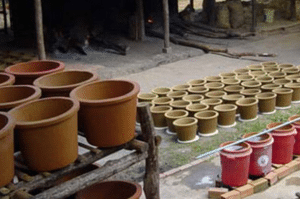 Clay, sawdust and a plastic bucket can make a water filter that catches dirt and disease-causing microbes. In the classic design, mix clay with a combustible material like sawdust or rice husks, give it a flower pot shape and fire it in a kiln. The sawdust or rice husks burn away, leaving tiny pores in the ceramic through which water filters. Organizations around the world have been using this kind of ceramic filter to reduce disease in impoverished communities for years.
Clay, sawdust and a plastic bucket can make a water filter that catches dirt and disease-causing microbes. In the classic design, mix clay with a combustible material like sawdust or rice husks, give it a flower pot shape and fire it in a kiln. The sawdust or rice husks burn away, leaving tiny pores in the ceramic through which water filters. Organizations around the world have been using this kind of ceramic filter to reduce disease in impoverished communities for years.
Bone char filtration
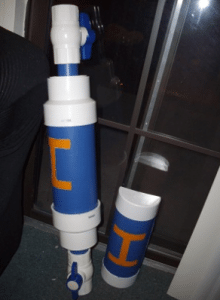 Not all filters remove heavy metals or other toxins from the water, but crushed and charred animal bone can. In areas where toxins leach into the water, removing them is a good idea. Chronic arsenic exposure, for example, can cause skin cancer, bladder, kidney and lung cancers, gangrene and possibly diabetes, high blood pressure and reproductive disorders. Uranium in the drinking water is linked to nephritis (pdf)—inflammation of the kidneys. As they inflame, the kidneys dump proteins that the body needs into the urine stream, a condition that can be lethal.
Not all filters remove heavy metals or other toxins from the water, but crushed and charred animal bone can. In areas where toxins leach into the water, removing them is a good idea. Chronic arsenic exposure, for example, can cause skin cancer, bladder, kidney and lung cancers, gangrene and possibly diabetes, high blood pressure and reproductive disorders. Uranium in the drinking water is linked to nephritis (pdf)—inflammation of the kidneys. As they inflame, the kidneys dump proteins that the body needs into the urine stream, a condition that can be lethal.
When a US Geological Survey study found high levels of arsenic and uranium in wells in the Ogala Lakota tribe’s US reservation at Pine Ridge, students at the University of Illinois at Urbana-Champaign had an idea: bone char. Crushed and charred cattle bones are cheap and locally available. With the right design, filters like the bone-char prototype pictured can clean contaminated water right in the home. It’s a solution that can work in Pine Ridge or anywhere arsenic contamination is rampant. Clean water solutions for LMICs are not universal, however. In some regions, bone char may face cultural aversions to ingesting cow products.
Slow sand filtration
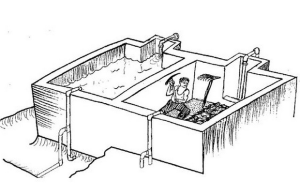 Slow sand filtration has the advantage of working on an entire community’s water source, not just individual households. Practical Action put together a technical manual for slow sand filtration systems, a complete guide to their construction and maintenance. Follow the link above to see the manual.
Slow sand filtration has the advantage of working on an entire community’s water source, not just individual households. Practical Action put together a technical manual for slow sand filtration systems, a complete guide to their construction and maintenance. Follow the link above to see the manual.
A slow sand filtration system is a combination of several parts: water storage tanks, an aerator, pre-filters, slow sand filters, disinfection stages, and filtered water storage tanks. The number of filters and filter types that are used in a given slow sand filtration system will depend on the quality of the source water and will be different for each community.
Everything-but-the-sink portable filter
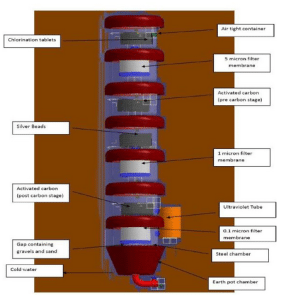 This portable filter design was proposed in response to a call for better water filtration solutions at taps in India. It uses chlorine, silver beads, activated charcoal and sand. Honeybee Network posed the original problem and an E4C member posted this solution. It includes a detailed guide to the specifications, materials and construction of a portable filter built from everything but the kitchen sink.
This portable filter design was proposed in response to a call for better water filtration solutions at taps in India. It uses chlorine, silver beads, activated charcoal and sand. Honeybee Network posed the original problem and an E4C member posted this solution. It includes a detailed guide to the specifications, materials and construction of a portable filter built from everything but the kitchen sink.
Honeybee Network also proposes phones as clean water solutions for LMICs. Mobile applications that employ a phone’s camera claim to sense impurities in water. We Googled up two that are in development: The H2O Mobile Water Testing Lab and Aquatest, though it’s not clear if the latter will be phone based or not.
Bamboo charcoal
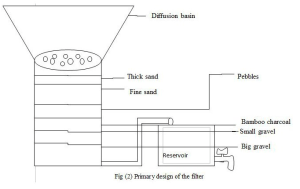 In this spin on the charcoal filter, a team of E4C members in Bangalore propose a filter made of locally available materials including charred bamboo, gravel and natural adsorbents. “The process we propose is indigenous, eco-friendly, low cost and entails minimum maintenance,” the team writes in their workspace. They estimate that their filter can handle 30 liters of water per hour, and it would be affordable for average households in the region.
In this spin on the charcoal filter, a team of E4C members in Bangalore propose a filter made of locally available materials including charred bamboo, gravel and natural adsorbents. “The process we propose is indigenous, eco-friendly, low cost and entails minimum maintenance,” the team writes in their workspace. They estimate that their filter can handle 30 liters of water per hour, and it would be affordable for average households in the region.
Solar sterilization
 If cost is a bigger concern than time or convenience, the cheapest way to treat water is to leave it in a plastic bottle in the sunlight. Leave clear bottles in the sun for a few hours and UV radiation and heat kills the microbes that cause diarrhea and other waterborne illness. The Sodis (for solar disinfection) method was deployed in some parts of Haiti after the earthquake in 2010, and it is used in emergencies and impoverished regions worldwide.
If cost is a bigger concern than time or convenience, the cheapest way to treat water is to leave it in a plastic bottle in the sunlight. Leave clear bottles in the sun for a few hours and UV radiation and heat kills the microbes that cause diarrhea and other waterborne illness. The Sodis (for solar disinfection) method was deployed in some parts of Haiti after the earthquake in 2010, and it is used in emergencies and impoverished regions worldwide.
If the bottle is too basic or prone to error, Solvatten sells a more highly designed solar disinfection device. It’s a jerry-can-like container with a built-in thermal indicator that lets drinkers know when the water is safe to drink. The Solvatten container opens like a book to expose the water inside to sunlight through clear plastic panels. Its black backing helps it absorb more sunlight.
The amount of sun exposure that a bottle needs varies by the amount of sunlight available (it takes longer to sterilize water on a cloudy day). To take the guess work out of the solar method, a disinfection indicator can measure light exposure and signal when the germs are dead. We came across this prototype of a solar indicator at IEEE’s Global Humanitarian Technology Conference in Seattle, Washington (USA). And there’s also Helioz, a similar concept with a top-mounted design.
Solar distillation
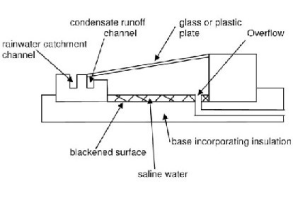 Not to be confused with solar sterilization or disinfection, solar distillation purifies even muddy, salty or otherwise undrinkable water through evaporation and condensation. The power of distillation to purify saltwater makes it unique among the treatment methods featured on this page.
Not to be confused with solar sterilization or disinfection, solar distillation purifies even muddy, salty or otherwise undrinkable water through evaporation and condensation. The power of distillation to purify saltwater makes it unique among the treatment methods featured on this page.
A solar still can actually be a cheap and simple piece of shaped plastic or glass, or they can be more highly designed devices. To work, the still allows sunlight to shine through a clear panel onto the impure water. The water heats and evaporates, then condenses on the underside of the panel and runs off into a container of some kind. This simple process takes huge amounts of energy, which is why solar stills can make more sense than stills powered by other fuels. Our Solutions Library links to a technical brief and construction guide to several different still designs from Practical Action.
Bicycle filter
Bicycles in all their glorious versatility and simplicity have got to be one of our favorite devices, and we were pleased to find not just one, but two bicycle-powered water filters. Nippon Basic Co. invented Cyclo Clean, a bicycle rigged with a pump to draw water from a river or well and a robust, three-filter system to purify the water. The filters are designed to last without replacement for two years, and the tires are puncture-proof. It can filter three tons of water in 10 hours.
Then there’s the Aqueduct, which is like Cyclo’s whimsical little brother. It’s a tricycle with bubbly curves and a sky-blue paint job that pumps up to two gallons of water through a filter while the rider pedals. Cyclo handles much greater volumes of water, but Aqueduct’s one advantage is that it can do its job on the move.
Both of these designs are in our – ahem – fantastic list of ten things you can do with a bicycle.
Emergency homemade filter
 The plastic bottle makes yet another appearance as a water treatment device, this time as a simple filter that can remove sediment and even disease-causing microbes. Simply cut the bottom from the bottle, fill it with layers of gravel, sand cloth and charcoal, filter the water through it and hope for the best.
The plastic bottle makes yet another appearance as a water treatment device, this time as a simple filter that can remove sediment and even disease-causing microbes. Simply cut the bottom from the bottle, fill it with layers of gravel, sand cloth and charcoal, filter the water through it and hope for the best.
This design is also featured in our list of the best appropriate technology DIY plans.
Chlorine
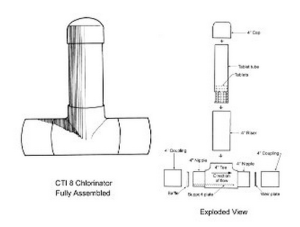 We saved the most reliable treatment method for last. Chlorine can work in the community water supply to kill microbes before it enters people’s jerry cans or home water supplies. And it keeps the water safe from new contaminations long after it is added.
We saved the most reliable treatment method for last. Chlorine can work in the community water supply to kill microbes before it enters people’s jerry cans or home water supplies. And it keeps the water safe from new contaminations long after it is added.
We’ve seen several interesting chlorination methods at work in resource-poor regions. Compatible Technology International developed this tested and proven device that chlorinates water in gravity-fed systems that fill a community water cistern. And these four experimental designs have worked in field tests to dose water accurately after people fill their buckets at a community well, stream or other source. The chlorinator, shown here fully assembled and broken down, attaches to a loop in the water pipe that feeds into the community tank. Image courtesy of CTI.
Chlorine is one of the most versatile and effective clean water solutions in LMICs and everywhere else.
E4C’s Solutions Library
Please see E4C’s Solutions Library for more clean water solutions for LMICs. In our database, you can view standardized information about hundreds of products and compare similar technologies side by side. To start, see the selection of water technologies such as water disinfection devices, and membrane filtration systems.
tags : affordable drinking water, clean water, household water treatment


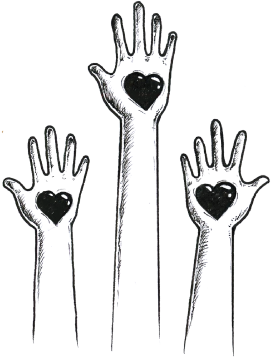


08-05-2022 10:46:09 AM
lagaka2282 says:
24-08-2020 11:59:15 AM
Rob says:
23-08-2020 12:08:55 PM
r.b.s.jonker says:
08-01-2020 07:19:50 AM
invwaterpbm says:
26-09-2019 07:01:54 AM
Low Cost Ways to Treat Water – Haniff Wilson's Website says:
18-08-2018 12:10:58 PM
says:
04-07-2018 09:45:18 AM
Dr Khin Maung aye says:
30-05-2018 12:54:33 PM
RAVI.Jadhav says:
27-05-2018 06:08:43 PM
Meareg desta says:
26-05-2018 06:47:13 AM
Dr khin maung aye says:
15-05-2018 11:40:47 AM
student says:
09-05-2018 09:19:52 PM
Murari prasad Sharma says:
20-02-2018 08:34:57 PM
Pat McCormick says:
09-02-2018 10:12:35 AM
Trilok Jani says:
07-02-2018 02:29:15 PM
Belinda Chung says:
27-01-2018 01:05:26 PM
minon says:
21-10-2017 03:34:18 AM
mugiri amando says:
15-10-2017 03:10:17 AM
Drinking Clean Water May Help You Avoid The Dangers Of Tap Water – Best Life Daily says:
18-08-2017 09:47:23 PM
Ashley Turns says:
16-06-2017 12:49:24 PM
Shamshuddin Ahmad Mukhiya says:
17-04-2017 07:46:25 AM
anila tahir says:
29-10-2016 02:59:46 PM
What is the most efficient and low in cost waste water treatment for agriculture? - Quora says:
06-09-2016 03:56:18 PM
Would YOU drink poop water? – RecyclingboyAyodhya says:
22-08-2016 05:24:52 AM
sekani mkandawire says:
18-07-2016 12:30:57 PM
Dan says:
07-06-2016 02:20:21 AM
Putu bagus sahadewa says:
30-05-2016 12:32:51 AM
durgesh soni says:
17-05-2016 06:39:28 PM
Rob says:
14-05-2016 03:18:49 PM
Dr Sergey pugach, homeopath says:
19-03-2016 08:48:19 AM
Aakash shrihsrimal says: